When it comes to picturesque lakes in the United States, destinations like Lake Tahoe in California or Lake Michigan in the Midwest might come to mind. However, the Show-Me State, Missouri, often flies under the radar regarding its stunning lakes. Missouri boasts some of the best lakes in the entire country. They offer a unique blend of natural beauty, recreational opportunities, and a rich cultural history.
Let’s delve into why Missouri has the best lakes in the United States.
Natural Beauty
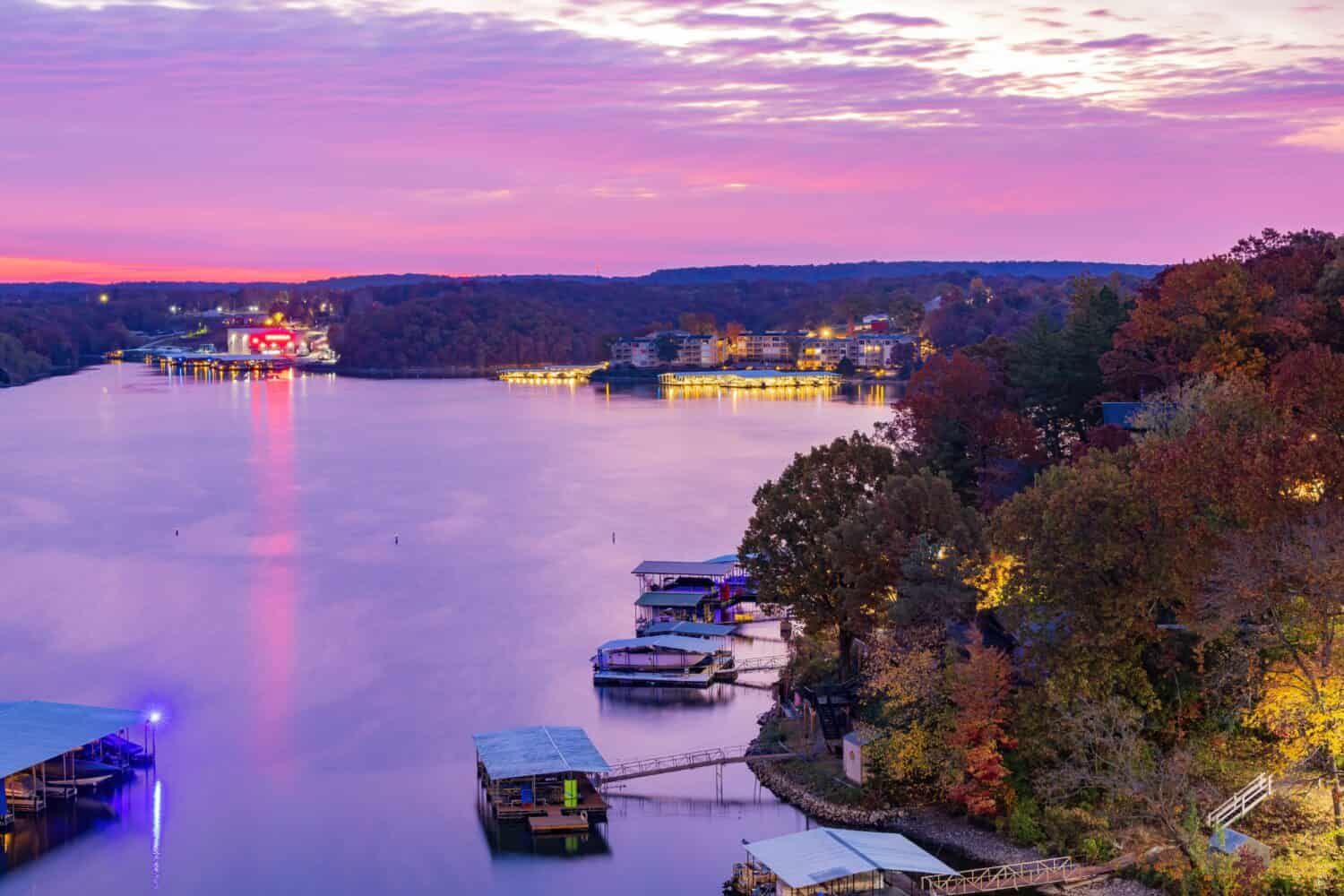
With over 6,000 lakes, there are plenty of lakes to discover.
©Kit Leong/Shutterstock.com
Missouri is a land of lakes, with over 6,000 natural and man-made lakes dotting its landscape. Whether you’re looking for a tranquil fishing spot, a family-friendly beach, or a water sports haven, you will find it in Missouri.
Lake of the Ozarks, perhaps the most famous of them all, is a sprawling reservoir that stretches over 90 miles (145 kilometers). It also boasts over 1,100 miles (1,770 kilometers) of shoreline. The lake is surrounded by lush greenery, and its clear, turquoise waters are framed by rocky bluffs that rise dramatically from the shoreline. Visitors can explore the lake’s numerous coves and inlets and find secluded spots and swimming holes.
Table Rock Lake, another gem in the Ozarks, is renowned for its emerald-green waters and rugged shoreline. The lake is encompassed by the lush and green Mark Twain National Forest. The rolling hills surrounding the lake burst into stunning colors in the fall, providing a spectacular backdrop for visitors.
Stockton Lake is a hidden treasure if you seek a more tranquil and intimate experience. Its serene, crystal-clear waters are surrounded by untouched wilderness and peaceful forests. The lake is a haven for birdwatchers, as it attracts a wide array of waterfowl and migratory birds, making it a perfect destination for nature enthusiasts.
Bull Shoals Lake, straddling the Missouri-Arkansas border, is another embodiment of natural beauty. With its vast expanse of deep blue water, fringed by dense forests and rocky cliffs, this lake offers a sense of awe-inspiring grandeur. The calm and pristine waters of Bull Shoals Lake also make it a fantastic spot for scuba diving.
Size and Depth

Lakes in Missouri are of mid-range size.
©Colton lee garcia/Shutterstock.com
Missouri’s lakes, while not necessarily the largest in the United States, possess a unique combination of size and depth that contributes to their charm and allure. The state’s lake system consists of both natural and man-made lakes, each with its distinct characteristics.
In terms of size, Missouri’s largest lakes are substantial, often measuring in the thousands of acres. Lake of the Ozarks, one of the state’s most iconic lakes, covers over 54,000 acres, making it the largest man-made lake in Missouri. This sprawling reservoir, created by the construction of the Bagnell Dam in the 1930s, stretches for approximately 92 miles (148 kilometers), providing ample space for boating, fishing, and water recreation.
Another sizable lake is Table Rock Lake, nestled within the picturesque Ozark Mountains in the southwestern part of the state. With a surface area of more than 43,000 acres, Table Rock Lake offers visitors a vast expanse of water to explore and enjoy. This lake is known for its clear, deep waters and stunning cliffs surrounding its shoreline.
Depth is another remarkable aspect of Missouri’s lakes. Many of these lakes, particularly those in the Ozarks region, feature impressive depths. Lake of the Ozarks, for instance, plunges to depths of over 130 feet (40 meters) in some areas. This depth allows for excellent fishing opportunities, as well as opportunities for scuba diving and exploring underwater caves and rock formations.
Furthermore, the depth of these lakes contributes to their overall water quality. The clear, deep waters provide a stunning visual backdrop and create an environment conducive to a thriving aquatic ecosystem. As a result, Missouri’s lakes are not only aesthetically pleasing but also ecologically significant.
Water Quality
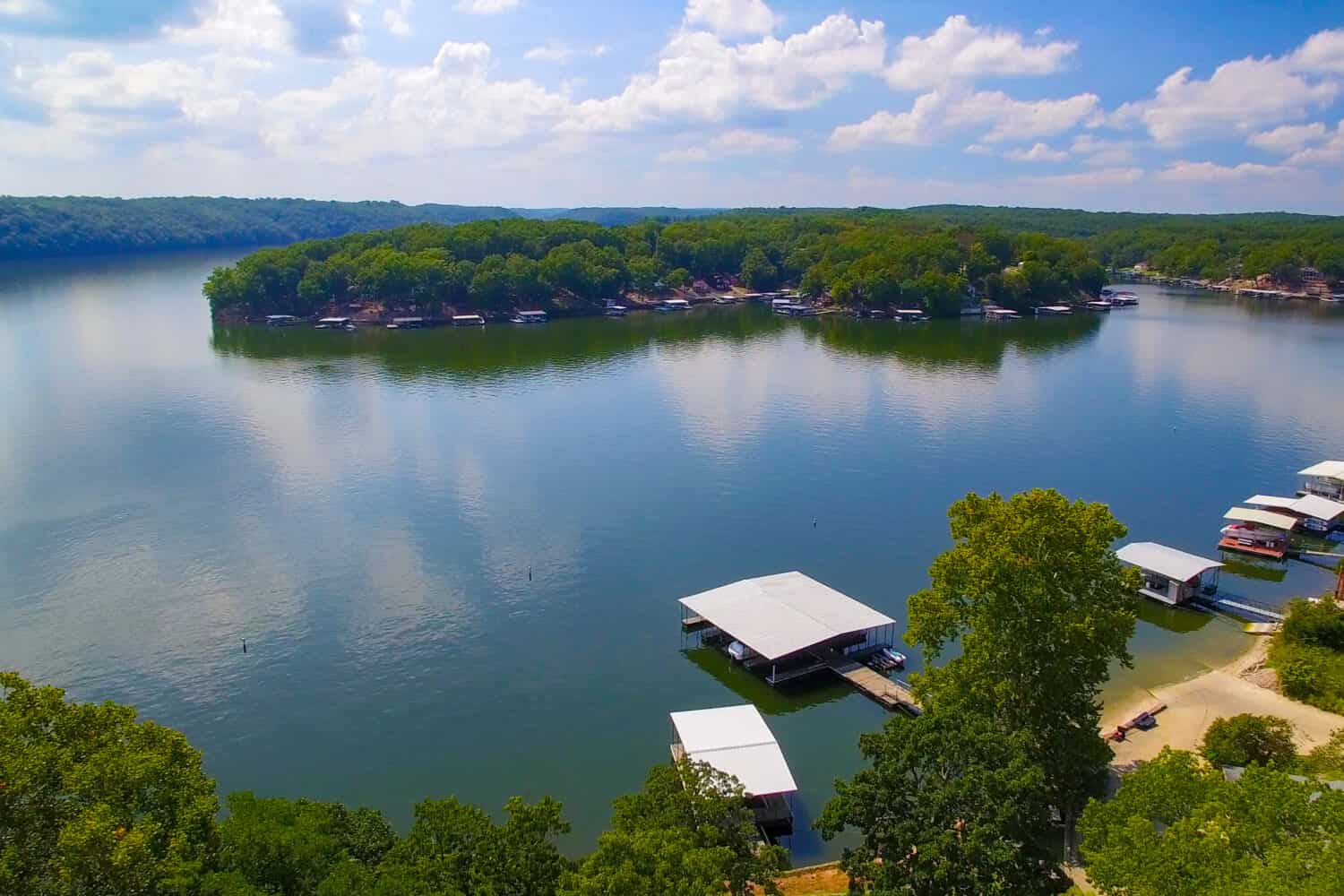
The shallowness of certain lakes in Missouri contributes to good water quality.
©Water Street/Shutterstock.com
The overall water quality of the lakes in Missouri is a matter of great importance and has seen significant improvements over the years. The state has made substantial efforts to ensure that its lakes maintain high water quality standards, making them safe for recreational activities and the preservation of the natural ecosystem.
One of the key factors contributing to the improved water quality is the state’s commitment to environmental protection. The Missouri Department of Natural Resources (MDNR) has implemented various programs to monitor and enhance water quality. These initiatives include regular water testing and pollution control measures. It also includes extensive public education campaigns to raise awareness about the importance of clean water.
Missouri also has stringent regulations to prevent pollution from entering its lakes. Measures such as stormwater management systems, buffer zones, and sewage treatment facilities are employed to minimize the impact of pollutants on the state’s aquatic ecosystems. These efforts have helped maintain healthy fish and other aquatic life populations in Missouri’s lakes.
Furthermore, the state has worked collaboratively with local communities and organizations to address water quality issues. Volunteer programs, like the Missouri Stream Team, engage citizens in clean-up and monitoring activities to help protect the state’s lakes and rivers.
The state has created a sustainable environment for aquatic life and recreational enjoyment through rigorous monitoring, pollution control measures, and community engagement.
Biodiversity

Herons can be observed flying graciously over Missouri lakes.
©Michael Munster/Shutterstock.com
Missouri’s lakes are renowned for their rich biodiversity. These aquatic ecosystems play host to a diverse array of plant and animal species, making them valuable hubs of ecological diversity.
The aquatic plant life in Missouri’s lakes is incredibly diverse. Submerged aquatic vegetation (SAV) is a vital habitat and food source for various aquatic organisms. Species like watermilfoil, coontail, and pondweeds thrive in the clear waters of lakes like Lake of the Ozarks and Table Rock Lake. These plants create a thriving underwater world, providing shelter and sustenance for many aquatic creatures.
Fish diversity in Missouri’s lakes is another significant aspect of their biodiversity. The state’s lakes are home to various fish species, including largemouth and smallmouth bass, crappie, bluegill, catfish, and muskellunge. Some of these lakes are famous for their trophy fish, attracting anglers from all over the country. For example, Lake of the Ozarks is known for its excellent bass fishing, while Lake Taneycomo offers superb trout angling opportunities.
The lakes’ underwater ecosystems also support many invertebrates, vital in nutrient cycling and food chains. Freshwater mussels, for instance, are prevalent in Missouri’s lakes and rivers. They filter water and help maintain water quality while serving as a food source for various aquatic species.
Birdwatchers and nature enthusiasts also find Missouri’s lakes to be a haven for avian biodiversity. These water bodies attract a variety of waterfowl, including ducks, geese, herons, and egrets. Many species stop at these lakes during migration seasons, providing visitors with excellent birdwatching opportunities.
Additionally, the lakeshores and surrounding woodlands are home to a diverse range of terrestrial wildlife. White-tailed deer, raccoons, squirrels, and various reptiles and amphibians live in the forests and wetlands near these lakes.
Recreational Activities

The lakes in Missouri are ideal for boating activities.
©OzarkStockPhotography.com/Shutterstock.com
Missouri’s lakes offer various recreational activities that adapt to multiple interests. Whether you’re seeking adventure or a relaxing day, you’ll find something to enjoy on these pristine waters.
For water sports enthusiasts, Missouri’s lakes are a dream come true. Lake of the Ozarks, in particular, is ideal for boating, water skiing, and wakeboarding. With its vast expanse of water and numerous marinas, you can rent boats, jet skis, or pontoon boats to explore the lake at your own pace. The calm coves and open waters provide an ideal setting for water sports enthusiasts of all levels.
Fishing is another popular activity on Missouri’s lakes. Anglers flock to these waters year-round in search of trophy-sized catches. From bass and crappie in Lake Truman to catfish in Mark Twain Lake and trout in Lake Taneycomo, there are ample fish species for anglers enthusiasts. Missouri Lakes are perfect for novice and experienced anglers.
Many lakes are also surrounded by lush forests and state parks, making them ideal for hiking and camping adventures. The Lake of the Ozarks State Park offers an extensive trail system that winds through the picturesque Ozark hills. It provides hikers with breathtaking views of the lake and its surrounding landscape. Campgrounds are also abundant, offering both primitive and modern camping options for those looking to immerse themselves in the great outdoors.
For families, Missouri’s lakes are a perfect destination. Many lakes have designated swimming areas with sandy beaches, making them safe and enjoyable places for kids to splash around and build sandcastles. Picnic areas, playgrounds, and shaded spots near the water provide opportunities for family gatherings and leisurely afternoons by the lake.
Fishing Opportunities

Rainbow trout are tough to catch due to their strong fighting ability.
©Henrik A. Jonsson/Shutterstock.com
Missouri’s lakes are a paradise for anglers, offering diverse fishing opportunities that cater to novice and experienced fishermen. Whether you’re looking to reel in a trophy-sized bass, catch a delicious dinner of crappie, or test your skills at fly fishing, the state’s lakes have it all.
One of Missouri’s most popular fishing destinations is Lake of the Ozarks. Anglers flock to this lake year-round, thanks to its thriving populations of largemouth, smallmouth, and spotted bass, as well as crappie, catfish, and bluegill. The lake’s extensive shoreline, numerous coves, and underwater structures provide diverse fishing environments, making it an ideal spot for casual and competitive anglers.
For those who prefer the challenge of fly fishing, Lake Taneycomo near Branson is a must-visit. This unique lake is known for its cold-water, trout-rich environment. The pristine waters flowing from Table Rock Dam create the perfect rainbow and brown trout habitat. Fly fishermen and women can enjoy wading in the clear, cold streams and casting their lines to catch these elusive and beautiful fish.
Bull Shoals Lake, shared with neighboring Arkansas, is another fishing gem in Missouri. This lake is famous for its trophy-sized smallmouth and largemouth bass. The lake’s clear waters are also home to catfish, crappie, and various sunfish species.
Scenic Trails and Parks
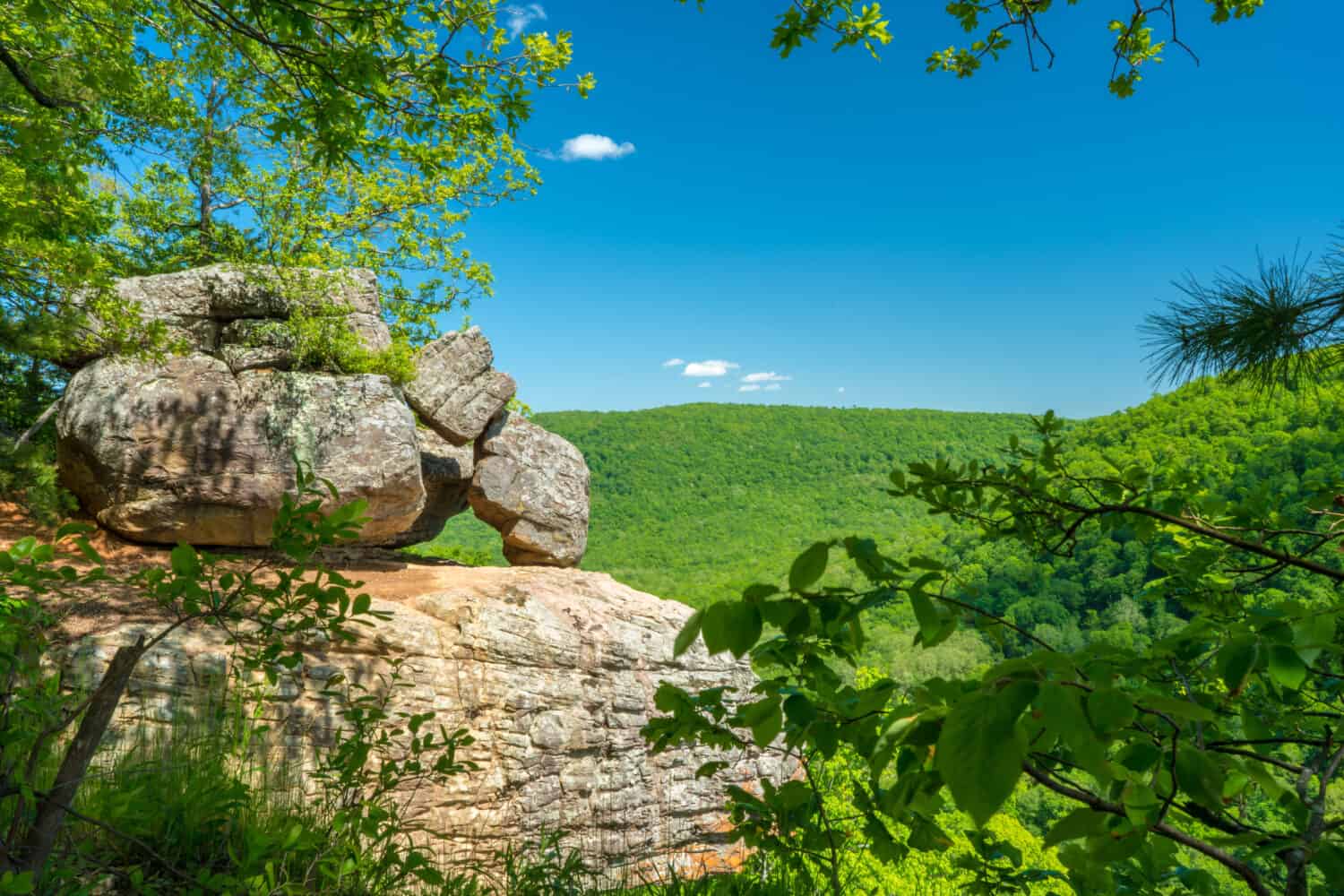
The Ozark Mountains have dozens of trails with stunning landscapes.
©shuttersv/Shutterstock.com
Missouri’s lakes are not only about water-based activities; they also offer many scenic trails and parks that allow visitors to immerse themselves in the natural beauty of the surrounding landscape.
Lake of the Ozarks State Park
Nestled along the shores of one of Missouri’s most famous lakes, Lake of the Ozarks State Park offers an extensive network of hiking trails that wind through forests, bluffs, and along the water’s edge. The Ozark Trail, a long-distance trail that spans over 500 miles (805 kilometers), also passes through this park, providing backpackers and nature enthusiasts with ample opportunities to explore the region’s rugged terrain and breathtaking vistas.
Ha Ha Tonka State Park
Located near the Lake of the Ozarks, Ha Ha Tonka State Park is famous for its striking geological features, including sinkholes, caves, and a natural stone bridge. The park offers several hiking trails that lead visitors through these geological wonders while providing stunning lake views. The Castle Trail, in particular, takes hikers to the ruins of a 20th-century castle perched on a cliff, offering panoramic views of the lake below.
Table Rock State Park
Situated on the shores of Table Rock Lake in the Ozarks, this state park is a haven for outdoor enthusiasts. Visitors can explore scenic trails like the White River Valley Trail, which winds through the hills and valleys surrounding the lake. The park also offers opportunities for birdwatching, picnicking, and camping.
Mark Twain National Forest
The Mark Twain National Forest surrounds numerous lakes and waterways, encompassing over 1.5 million acres of land in southern Missouri. The forest features an extensive network of hiking trails that range from easy strolls to challenging backcountry hikes. Trails like the Eleven Point River Trail and the Ozark Trail provide access to pristine wilderness areas, clear streams, and secluded lakes.
Stockton State Park
Located in the southwestern part of the state near Stockton Lake, this state park is known for its picturesque shoreline and various outdoor activities. Hikers can explore the trails that wind through woodlands and along the lake’s edge. The Stockton Lake Trail offers captivating lake views and opportunities for wildlife spotting, making it a delightful spot for a leisurely hike.
Meramec State Park
This park is situated near Meramec Spring, one of Missouri’s largest springs, and is a gateway to the Meramec River. Hikers can explore the park’s numerous trails, including the Wilderness Trail, which takes you through rugged terrain and along the riverbanks, providing glimpses of limestone bluffs and serene forests.
Accessibility and Amenities

Kansas City, MO, is a few hours away from the most beautiful lakes in Germany.
©Sean Pavone/Shutterstock.com
Accessibility is one of the key advantages of Missouri’s lakes. Many of the state’s most famous lakes are conveniently located within a few hours’ drive of major cities like St. Louis, Kansas City, and Springfield. This proximity means that residents and tourists can easily access these aquatic gems without extensive travel. Whether you’re planning a day trip or a week-long vacation, the convenience of reaching these lakes makes them an attractive destination.
Moreover, the infrastructure around Missouri’s lakes is well-developed. You’ll find numerous campgrounds, resorts, and cabins near the lakeshores, allowing visitors to enjoy extended stays. These accommodations range from rustic campsites for those seeking a back-to-nature experience to luxurious lodges with modern amenities for those looking for comfort and relaxation.
Many of the lakes in Missouri have boat ramps, marinas, and rental services, making it easy for visitors to enjoy water-based activities. Whether bringing your boat or renting one on-site, you’ll be free to explore the vast waters of Missouri’s lakes. Additionally, picnic areas and designated swimming beaches are often available, providing ideal spots for families to relax and enjoy the lakeside atmosphere.
Fishing enthusiasts will find well-maintained fishing docks, piers, and fish-cleaning stations at some locations, making it convenient to pursue their favorite hobby. Missouri’s Department of Conservation actively manages the fisheries in these lakes, ensuring a sustainable and thriving ecosystem for anglers to enjoy.
Cultural and Historical Significance
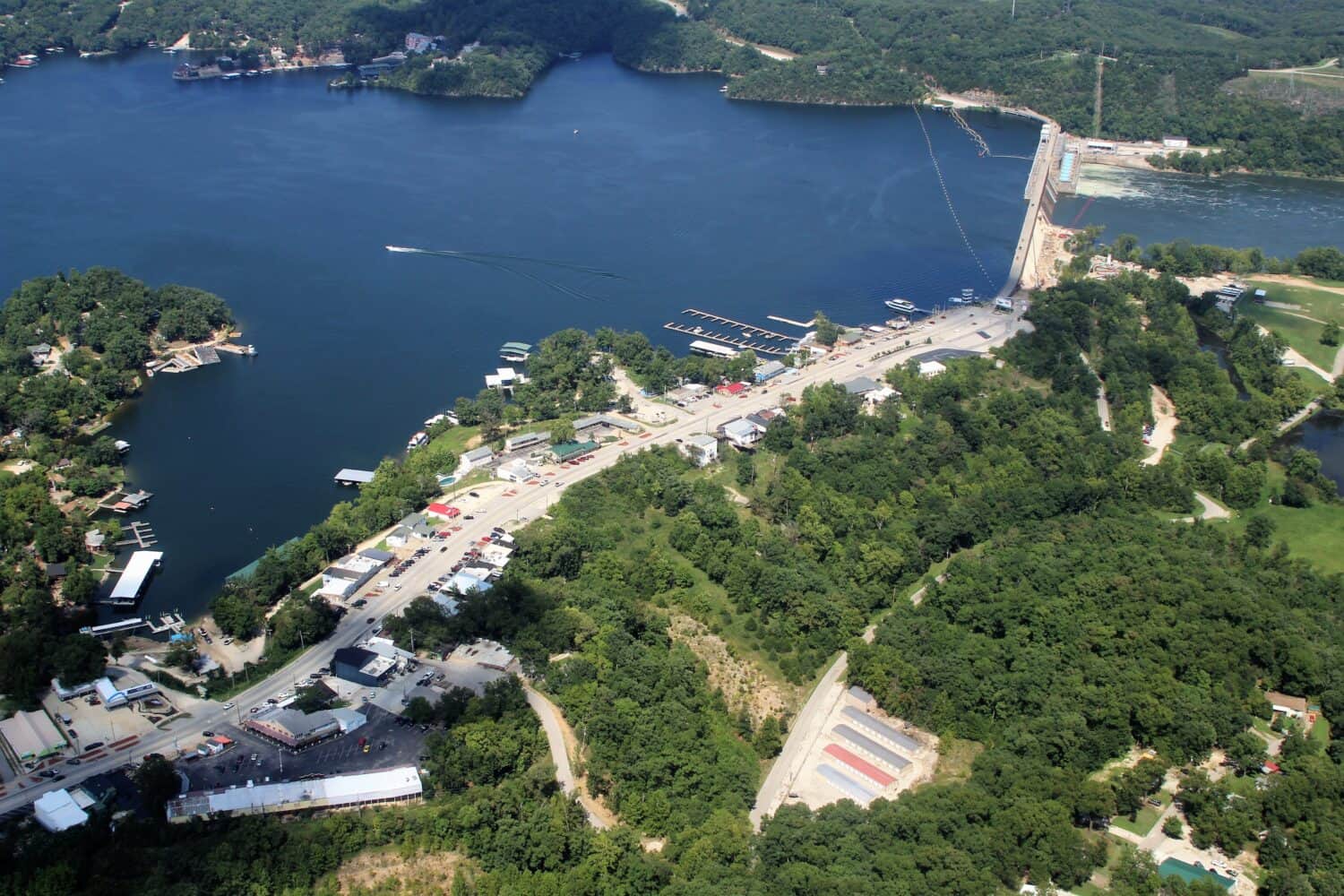
The Bagnell Dam impounds the Osage River.
©Kaleb Tallmage/Shutterstock.com
Missouri’s lakes also hold a profound cultural and historical significance. These bodies of water have played integral roles in the state’s development, from the early days of Native American settlements to the growth of Missouri’s tourism industry in the 20th century.
Their cultural and historical importance begins with their significance to Native American tribes. Before European settlers arrived, indigenous people like the Osage and Cherokee inhabited the region around the Ozark lakes. These lakes provided sustenance through fishing and hunting and played a central role in the spiritual and cultural practices of these tribes. Even today, archaeological sites around these lakes reveal artifacts that shed light on the lives of these early inhabitants.
In the 1930s, during the Great Depression, the construction of Bagnell Dam created the Lake of the Ozarks. This project was part of the New Deal’s public works efforts and employed thousands of workers while creating a recreational oasis in the heart of the state. The dam remains a testament to that era’s engineering achievements and economic revitalization efforts.
The Ozarks region, encompassing several of Missouri’s lakes, has been a cultural melting pot for centuries. German, Irish, and Scottish immigrants settled here, bringing their traditions, music, and cuisine, which continue to influence the local culture. Bluegrass and country music have deep roots in the Ozarks, with many famous musicians hailing from the area. The lake towns host annual festivals and events celebrating this rich musical heritage, such as the Bluegrass & BBQ Festival at Silver Dollar City near Table Rock Lake.
Community Engagement
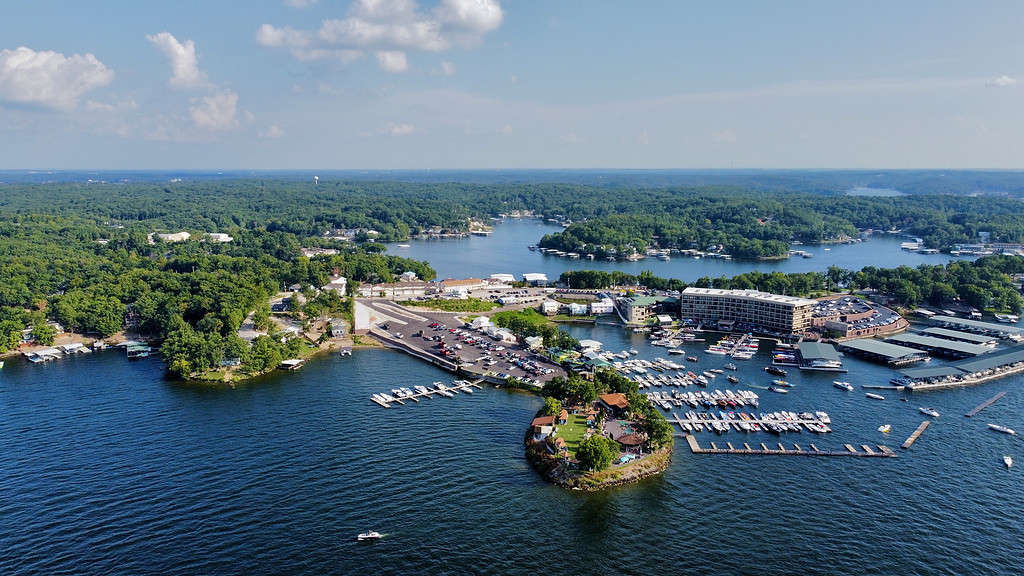
Lake of the Ozarks has a strong community of residents.
©Perry Spring/iStock via Getty Images
The vibrant and welcoming communities that surround these lakes play a pivotal role in enhancing the overall experience for visitors and residents. These communities are deeply connected to their natural surroundings and have fostered a sense of pride and stewardship for the lakes they call home.
Conservation Initiatives
Local organizations and conservation groups work together to maintain water quality, protect wildlife habitats, and combat invasive species. These efforts ensure that the lakes remain healthy and sustainable for future generations.
Volunteer Programs
Clean-up events, tree-planting initiatives, and shoreline restoration projects are just a few examples of the hands-on activities that engage the community in lake preservation. These events benefit the environment and foster a strong sense of community pride and togetherness.
Educational Outreach
Local nature centers, educational programs, and interpretive signs provide valuable insights into the lakes’ biodiversity, geology, and history. These educational efforts promote environmental awareness and encourage responsible outdoor recreation.
Festival and Events
Lakeside communities often host a variety of festivals and events throughout the year to celebrate their natural surroundings and culture. From fishing tournaments and boating regattas to music festivals and art fairs, these gatherings showcase the best of what the lakes offer.
Water Safety Initiatives
Given the popularity of water-related activities in Missouri’s lakes, community engagement extends to promoting water safety. Local authorities and organizations collaborate to provide boating safety courses, lifeguard training, and awareness campaigns. This has the goal to ensure everyone enjoys the lakes responsibly.
Support for Local Businesses
Lakeside communities understand the symbiotic relationship between tourism and the local economy. Many actively support local businesses, essential for providing goods and services to residents and visitors alike. This support helps these businesses thrive, contributing to the community’s overall vitality.
The photo featured at the top of this post is © NSC Photography/Shutterstock.com
Thank you for reading! Have some feedback for us? Contact the AZ Animals editorial team.






